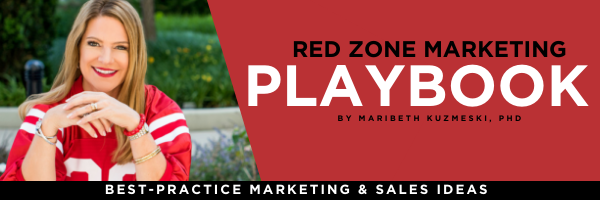Do you know what the number one impediment to content creation is for financial advisors? You guessed it—time. This is not to say that a lack of desire or a limited knowledge of technology might not also be to blame, but time is the single greatest obstacle advisors face when it comes to creating original content. Learning how to repurpose your advisor content will go a long way!
So, when you finally do get around to writing a blog, hosting or attending a podcast, offering a webinar, or creating a lead magnet, you want to get all the mileage you can out of it.
This process is known as repurposing and it can make light work of the otherwise overwhelming task of creating content.
Repurposing content is the process of taking one asset and using all or part of it in a different way to create a new asset. We do it all the time at Red Zone Marketing! Repurposing not only breathes new life into old content, but gives you a significant head start on creating new assets. The hard work is already done! Now you just have to put your new spin on it.
Here are some helpful ways you can start slicing, dicing, and repackaging the content you already have to create new assets. This list is by no means exhaustive but can help you get the ball rolling in the right direction.
1) Pull Out Statistics
Statistics are low hanging fruit for social media content. Comb over your blog articles, podcasts, videos, etc. to look for some of the most interesting numbers to share with your audience. Of course, you’ll want to explain what these numbers mean in the context of your advisor value, but that is likely already in your content and pluckable for a social caption.
2) Turn Bite-Sized Information into Short Videos
Videos are daunting because advisors often don’t know what to talk about. But, I bet you could find script material for at least 5 videos in less than thirty minutes looking through old blogs. You’ll want to keep the videos under two minutes, so you likely won’t need more than a paragraph to read for each. You can even use a free online teleprompter tool like Zacue to display your script while you record the video with your phone.
3) Make Audiograms from Audio or Video Content
Longer videos, podcasts, and webinars can be mined for shorter soundbites to use in the creation of audiograms. An audiogram is a static image that is converted into a video by placing audio, a waveform, and sometimes transcriptions over it. They should be no longer than sixty seconds in length and should highlight an especially interesting point from the video or podcast to hook the audience. You can then use your audiogram to direct users to the full-length video, podcast interview, your site, or a related landing page.
4) Turn Blog Posts into Podcast Episodes
Podcasts are a great way to turn dry or challenging content into a more palatable asset. Podcasts allow you space to explain your point or expand on the information provided in a less formal, more relatable way. For example, perhaps you can pepper your “When and How to Exercise Company Stock Options” podcast with real life examples—examples that illustrate how the minutiae of the exercising process play out in real life.
5) Turn Your Listicle into a Carousel Post
A listicle is an article primarily made up of a list. They are incredibly popular because they are easy to read and typically spur high engagement. They are also prime resources from which to pull information for Instagram Carousel Posts, or posts where you swipe through multiple images that tell a single story, since they are already broken down into main points. When creating your carousel post, your first image may introduce what the list will be about, the subsequent images will each represent one of the points from your listicle, and the last image with show your Call to Action (CTA). These are simple to make in Canva and can be reused as templates for future posts.
6) Same Content, New Location
This list point is less about how to repackage one asset into another and more about making sure you are using each asset across all mediums. If you record webinars, consider adding the recordings to your site like I have in my Webinars on Demand section. If you record a short video for social media, reuse it in a lead nurturing email campaign sequence. Take stock of all your marketing collateral. Evaluate where one piece can simply be snipped here and pasted there in order to help diversify and increase your asset base in another area.
Take the “No New Content” Challenge
In 2015, the Buffer marketing team performed a brief experiment to see what would happen if they stopped making new content and only refreshed and repackaged their existing content. During this experiment, two to three new assets were made from old content each week for a month. At the end of the experiment, “Organic search traffic grew over 4%. New SlideShare presentations nabbed almost 200,000 views, and one Medium post captured 2,888 views and made it into the Top 20 for a day.”
The moral of the story: Not all content has to be new content, especially if you already have an arsenal of content from which you can readily pull. Start by identifying your most popular pieces and repurpose them in as many ways as you can. Then, see where you can cross-use these new assets via other mediums for maximum exposure.
I hope you find this information helpful for you as you think about ways to experiment with your content and your strategy!



